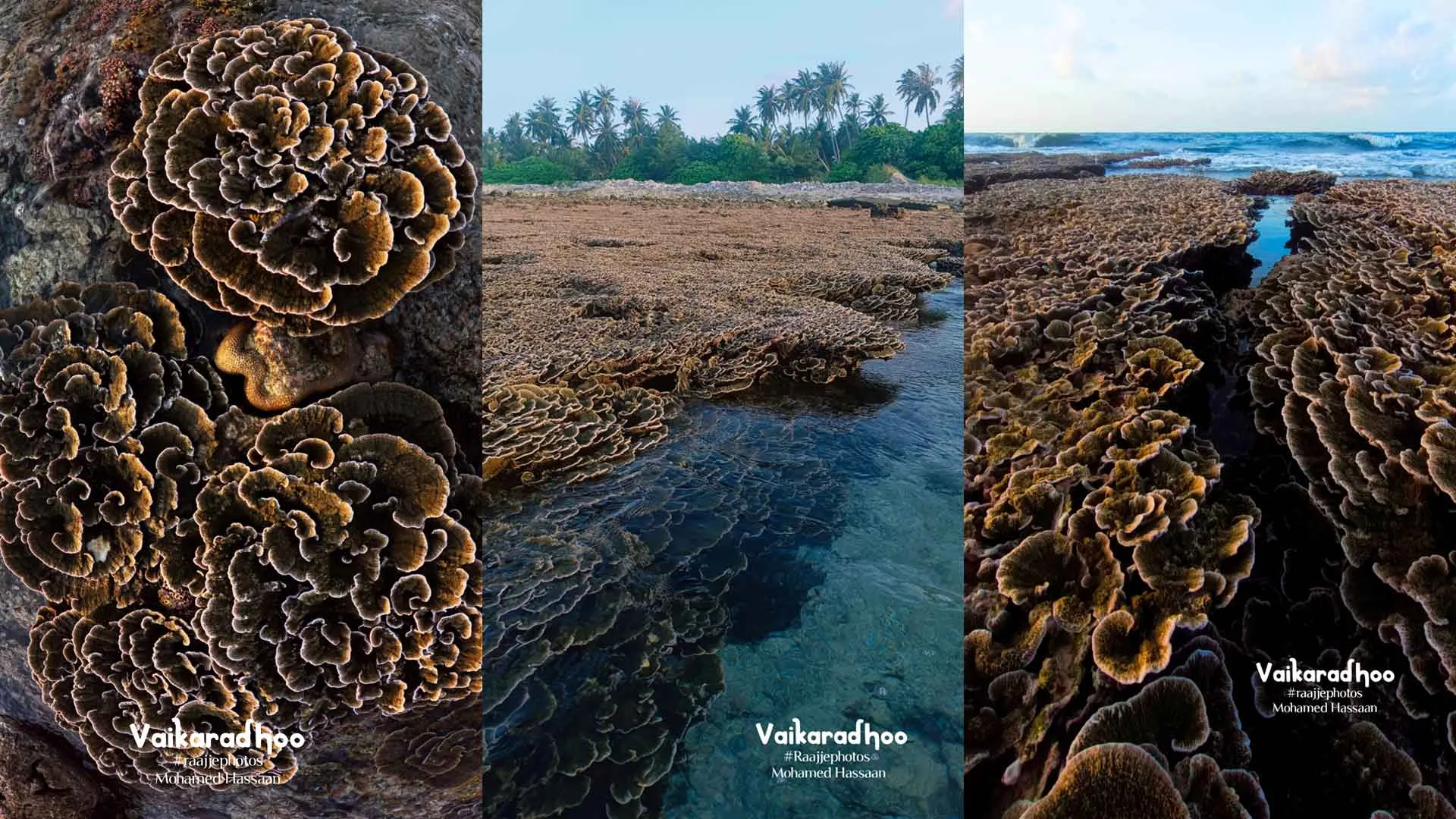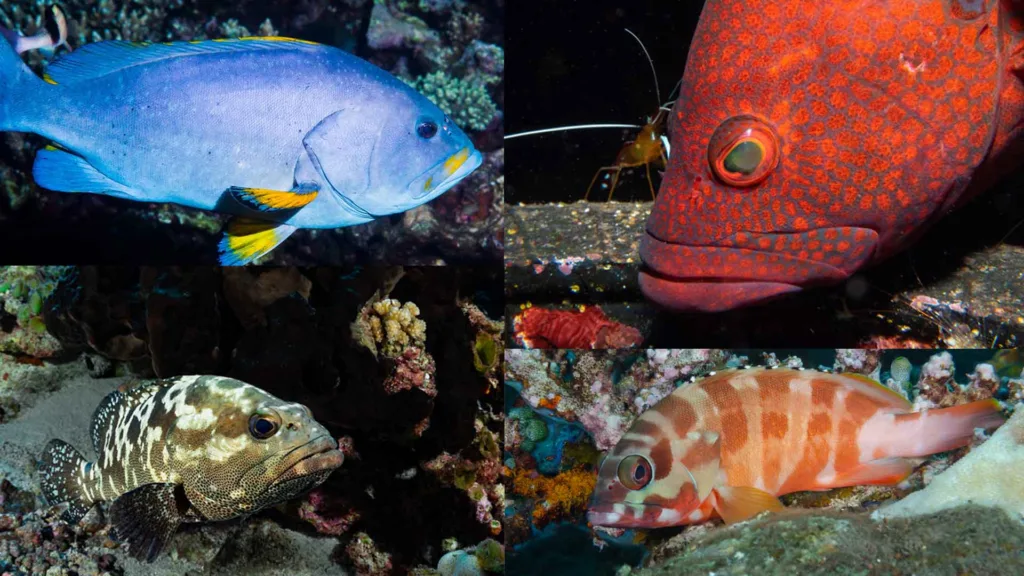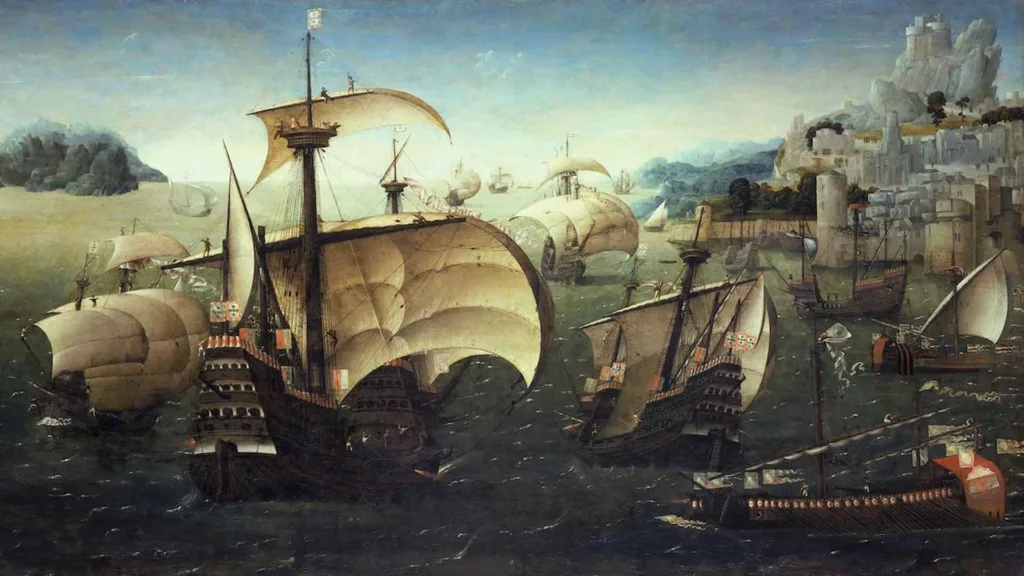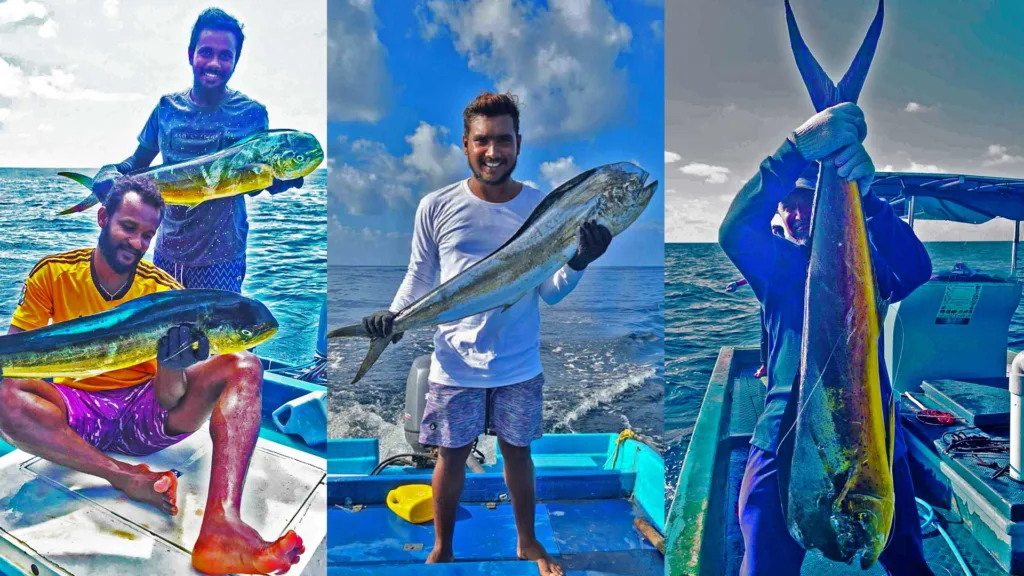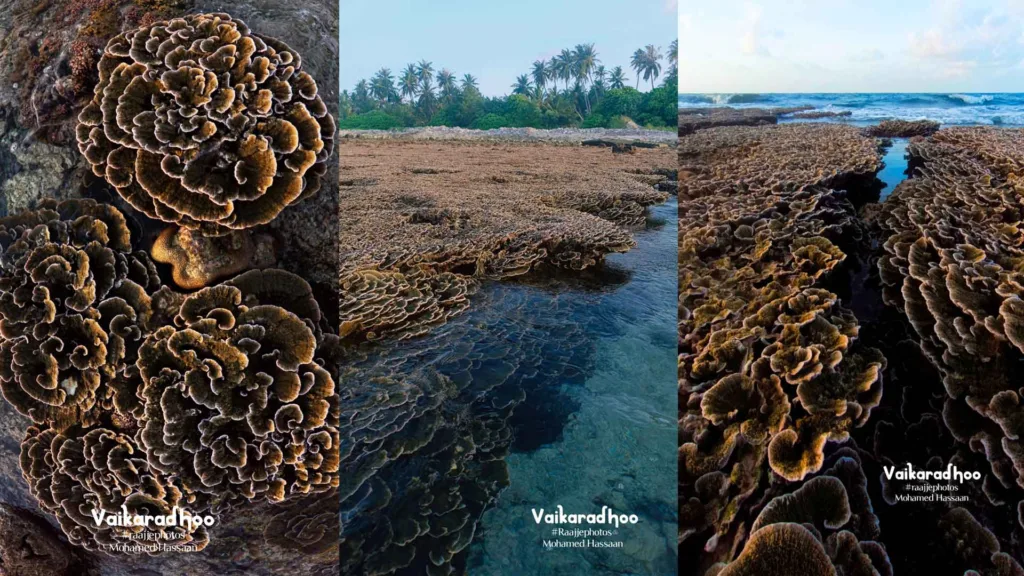
Not every photographer can capture the hidden whispers of nature or the delicate patterns she conceals beneath the shifting light. Yet in a recent video, Mohamed Hassan—an artist of lens and soul from Vaikaradhoo Island in the Haa Dhaal Atoll—unveils the Maldives’ coral realms in all their breath-stealing brilliance, offering the world a glimpse of underwater poetry through his social media. In the video, you can see the island’s lagoon filled with vibrant, healthy corals. In addition, the video shows schools of fish swimming through the narrow pathways of the vast coral garden.
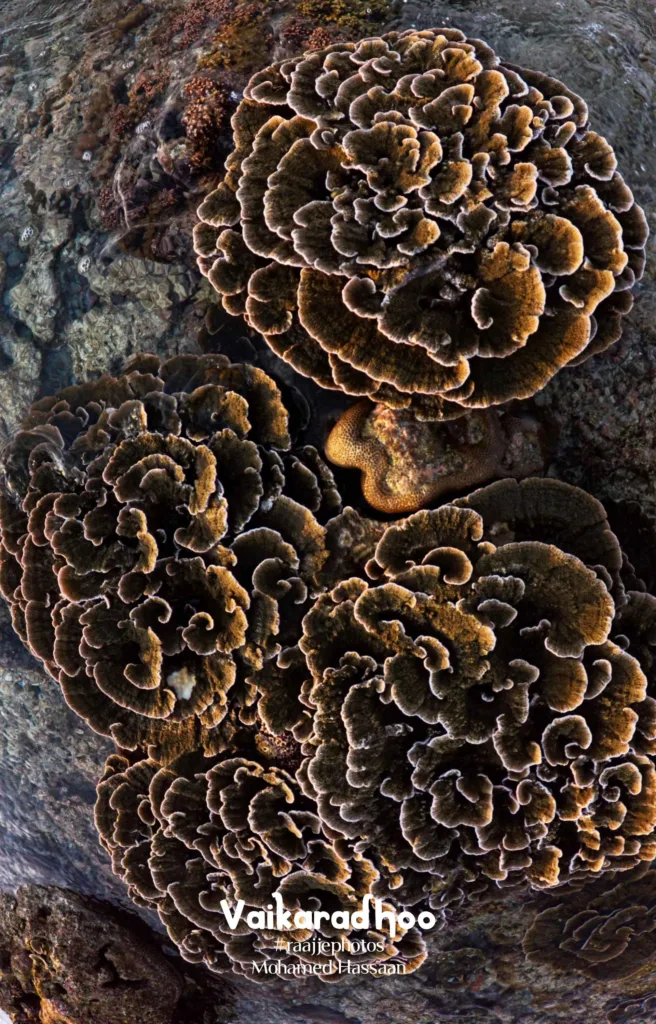
The main coral species featured in this video is Montipora foliosa. The 2022 Maldives Red List Assessment indicates that nearly every atoll in the Maldives harbours this coral species. Other coral species found here include staghorn, brain, and finger corals.
A habitat for fish and other small invertebrates can be found within these enormous formations. The plankton and algae that organisms require for sustenance are provided by corals. And these are all part of the marine ecosystem. These maze-like structures protect small fish from predators. Most importantly, these are nurseries for numerous species. For example, some fish lay eggs, and the larvae drift through the water. Some species, like butterflyfish, settle on the reef as juveniles. They live here and consume tiny invertebrates. The damselfish is an excellent example of fish that use reefs as nurseries. The juveniles hide in coral rubble and small crevices. Snapper fish and parrotfish are two examples of other fish species that make use of these kinds of nurseries.
The Maldives’ ecosystem consists of various habitats, ranging from small tide pools to deep drop-offs or slopes. The coral reefs are the Maldives archipelago’s distinctive feature. The Indian Ocean accounts for 11% of the global reef area (Burke et al., 2011). The Maldives cover approximately 4,500 km². These vast formations include 2,041 distinct coral reefs (Naseer and Hatcher, 2004). And it accounts for nearly 5% of the world’s reefs, making it the world’s seventh-largest coral reef system by area (Spalding et al., 2001).
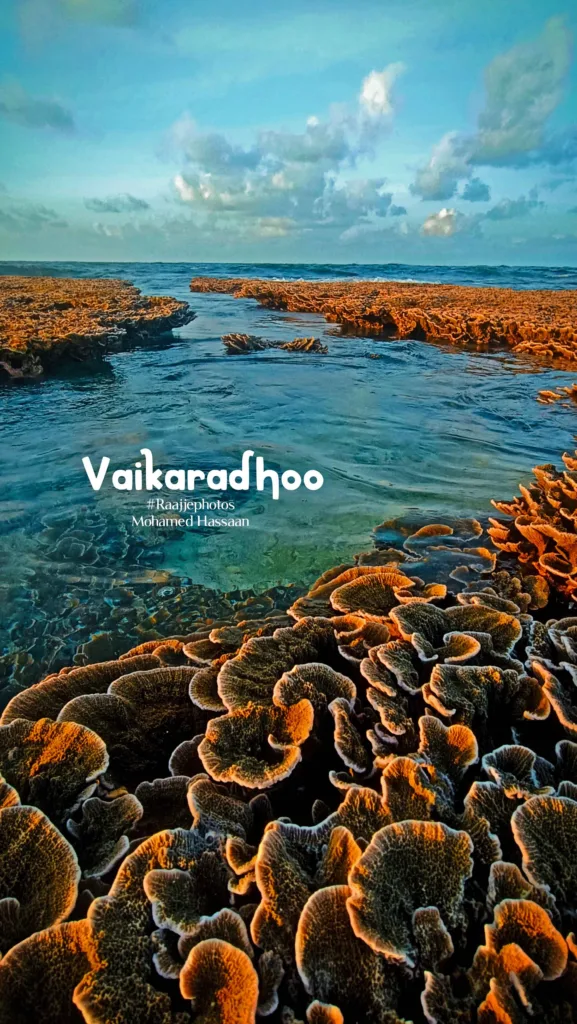
Maldivian reefs are recognized for their rich diversity of life forms, despite significant gaps in knowledge regarding the biodiversity they support. The primary actors in coral reef ecosystems are typically stony corals, which are colonial animals capable of constructing a calcium carbonate skeletal structure. The Maldives has approximately 300 species of reef-building corals (Pichon and Benzoni, 2007), which contribute to the incredible biodiversity of organisms that live in Maldivian waters.
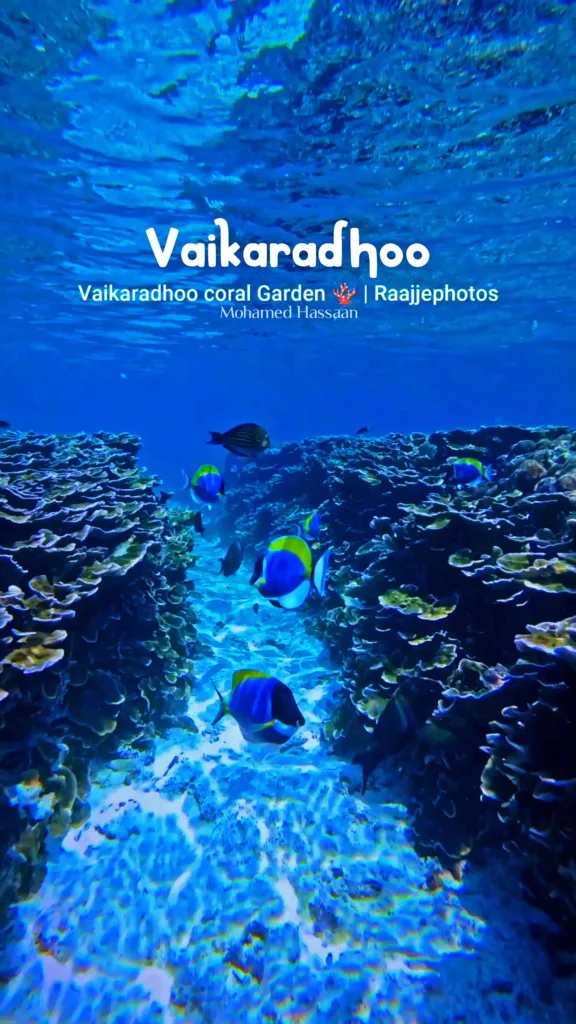
The coral garden on Vaikaradhoo Island showcases the beauty of the Maldives’ marine wonders. It represents and reflects the mystery and beauty of the Maldives’ underwater treasures deep within and beyond this scenery. It reminds us of how our forefathers set sail on these tranquil waters to pursue various forms of livelihoods. Our daring fishermen rowed their small dhaonis (fishing vessels) through these pristine waters, knowing that there would be fish to satisfy their hunger. They may not have known that these colorful, complex ecosystems were responsible for the fish’s abundance.
The ocean fundamentally influences human development and well-being. Keeping these delicate formations safe from the activities of humans is of the utmost importance. This holds particularly true for nations such as the Maldives, known for their extreme exposure and vulnerability. These natural patterns and formations are among nature’s marvels. These vast systems are not only an asset but also an expression of this beautiful country. It is critical to protect and preserve these delicate formations not only to sustain and attract tourists. Furthermore, we must protect and preserve these delicate formations for the sake of human life. Everything in nature is intricately linked and woven together. As a result, we must develop and implement policies to protect these vital ecosystems.
